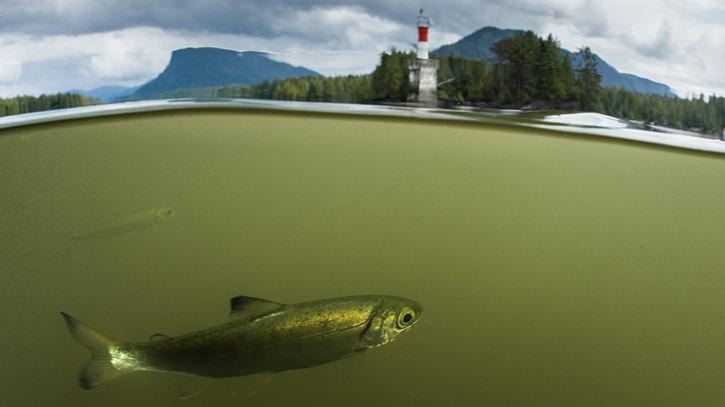An “invisible migration” taking place under the surface of northern rivers will be revealed with a series of events starting on May 11.
Every spring about 300 million juvenile salmon make their way from lakes, rivers and streams to the Skeena River estuary.
The Skeena Watershed Conservation Coalition is highlighting the migration of the tiny fish, known as smolts, with three events at locations near Smithers and Hazelton.
SWCC executive director said the series of events had been dubbed the Invisible Migration because the fish were hidden under the opaque surface of muddy spring floodwaters.
“We see these muddy rivers flowing past our communities and it's easy to forget that just below the surface the waters are teaming with giant plumes of baby salmon,” said McPhail.
The events are an extension of celebrations held annually to mark the return of the adult salmon from the coast.
McPhail said it was important to recognize the journey of the young salmon back to the saltwater.
“Our communities always celebrate the return of the adult salmon each fall, because they are such an important food source,” she said.
“But the out-migration of the smolts heading to the ocean is just as amazing and equally important.
“This year, we decided to celebrate their journey, too.”
The first event will take place at the Babine River Fish Fence, where the Lake Babine Nation's fisheries program conducts a catch-and-tag program of smolts as they leave the lake.
There will be hourly boat tours starting at 10 a.m., a ceremony and a free wild salmon barbecue starting at noon.
Invisible Migration events will also be held in Hazelton on May 20 and Prince Rupert on May 23.
The latter will mark their arrival at the Skeena estuary, where Petronas hopes to build its proposed Pacific Northwest LNG terminal on Lelu Island.
The facility would be used to process and export natural gas transported from Hudson's Hope by TransCanada's proposed Prince Rupert Gas Transmission Project pipeline.
McPhail said there were concerns the Petronas plant would damage eelgrass beds that provide rearing habitat for wild salmon.
“The estuary is a critical component of the Skeena system,” said McPhail.
“The smolts arrive at a sensitive time of their lifecycle.
“The estuary gives them a refuge from predators and a chance to get used to the saltwater environment before they head out to the open Pacific.”
According to Pacific NorthWest LNG's website, the proposed facility would be located adjacent to Flora Bank, and includes a proposed suspension bridge and trestle to connect Lelu Island with the marine terminal.
It also says the facility has been designed to avoid sensitive marine environments, such as the eelgrass beds on Flora Bank.
For more information about the Invisible Migration events visit www.skeenawatershed.com or phone 250-842-2494.
